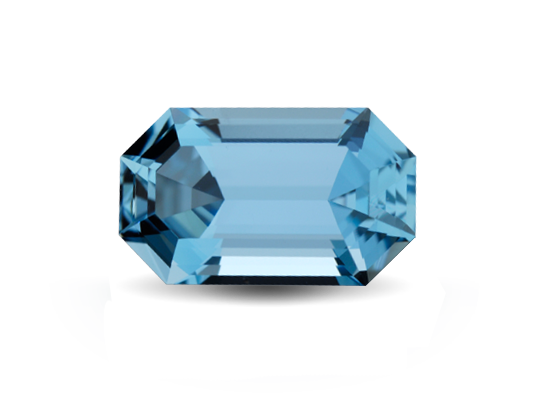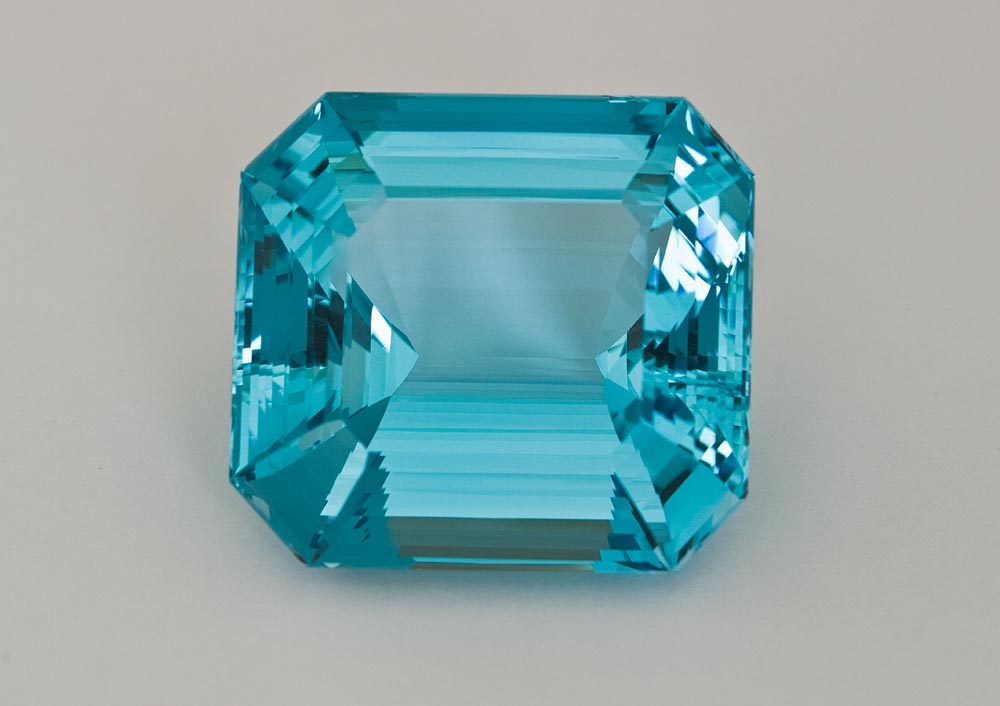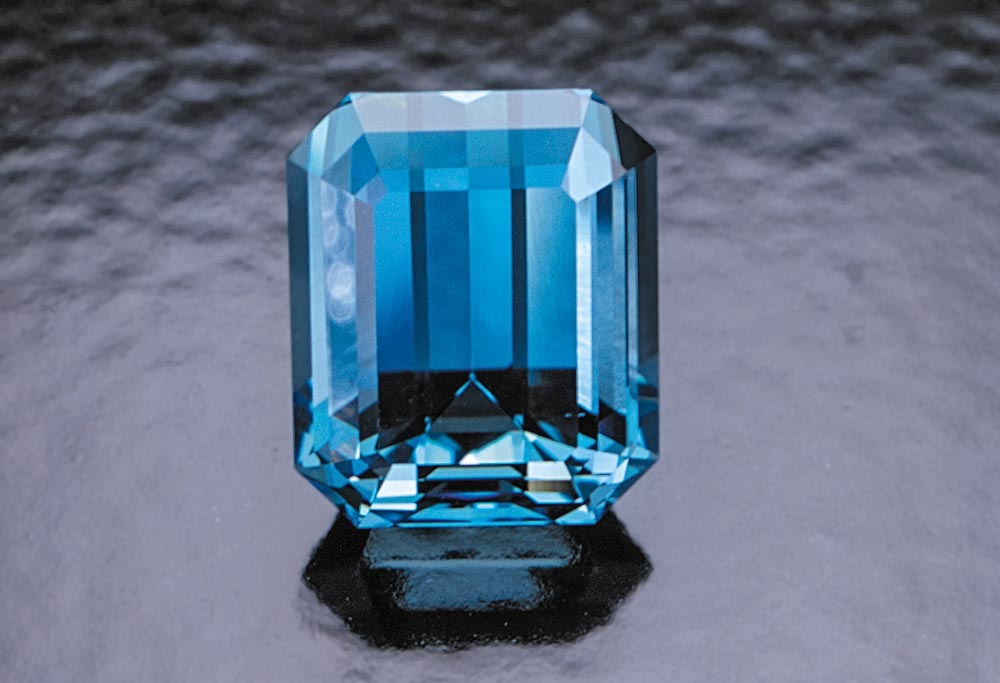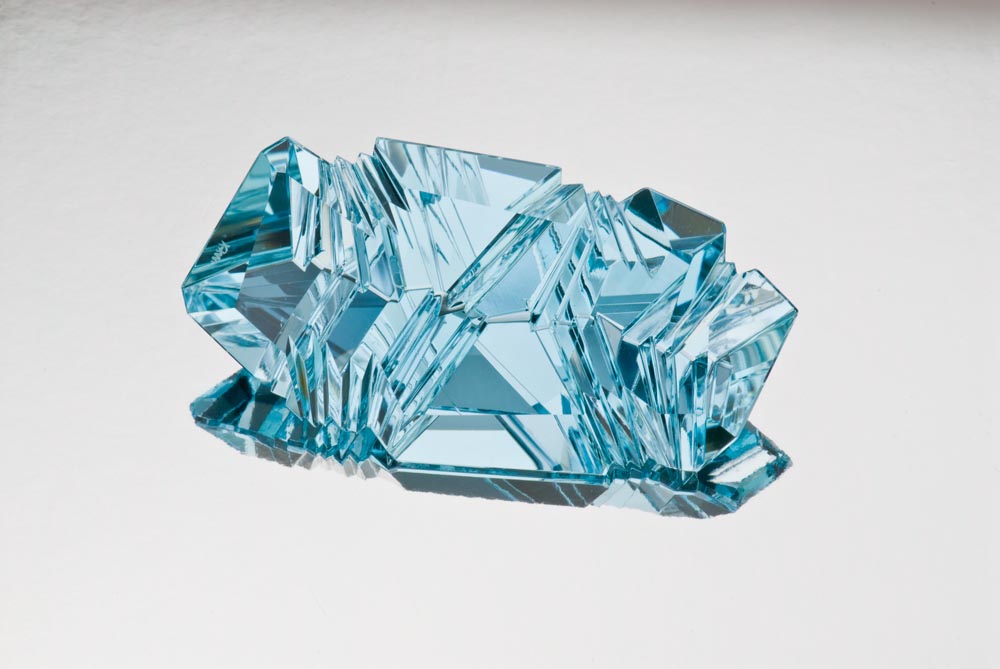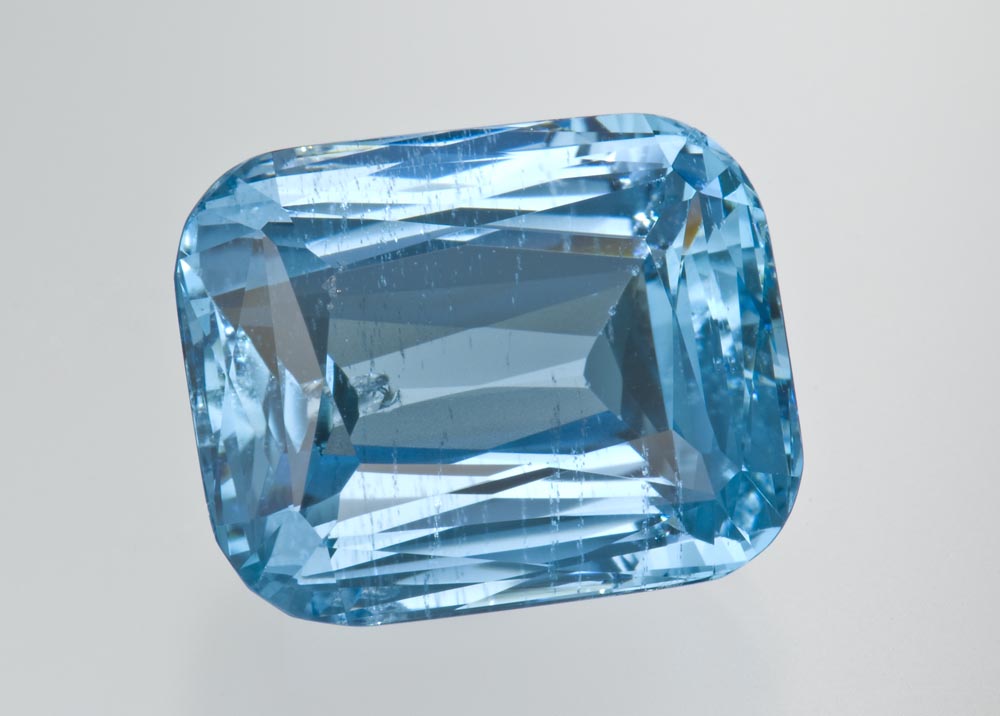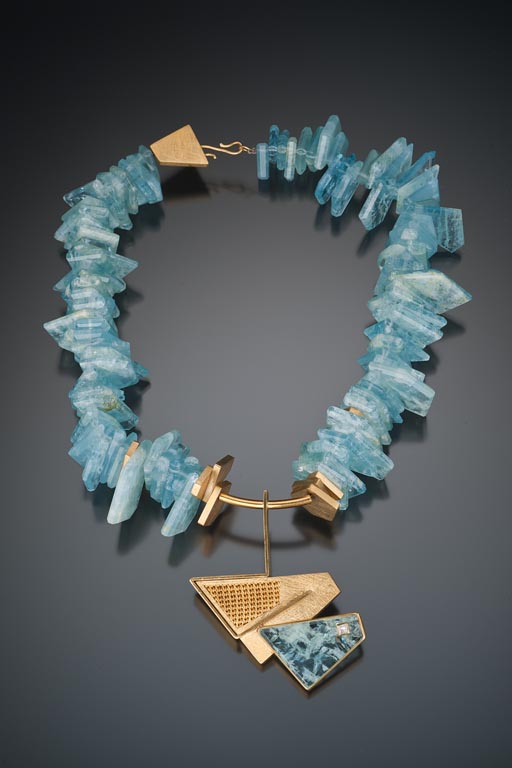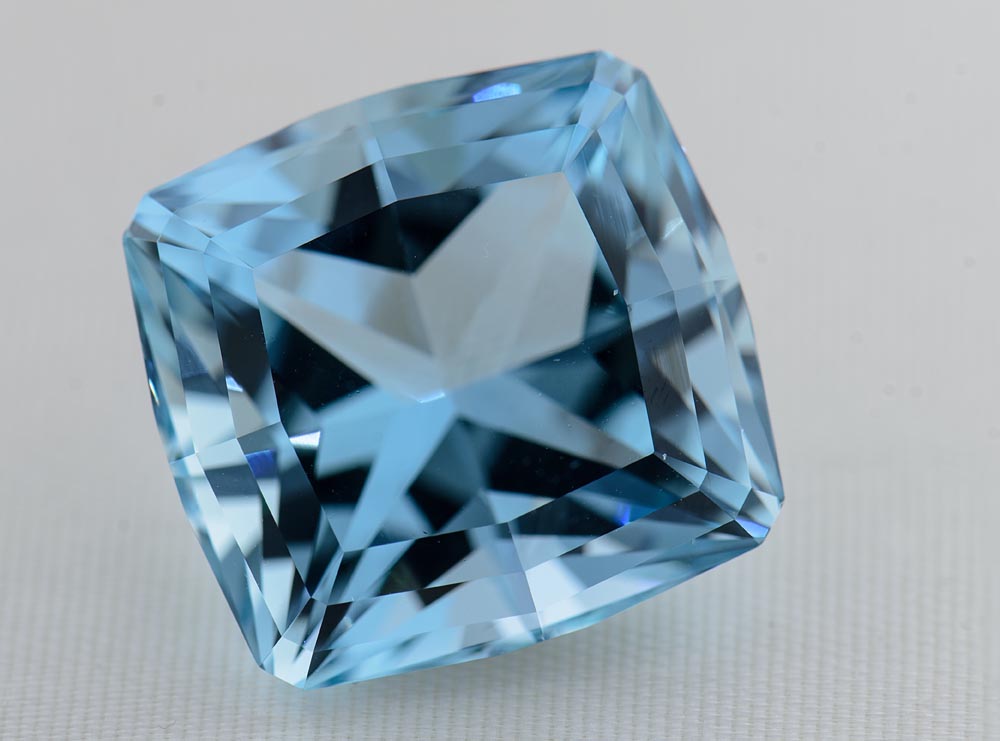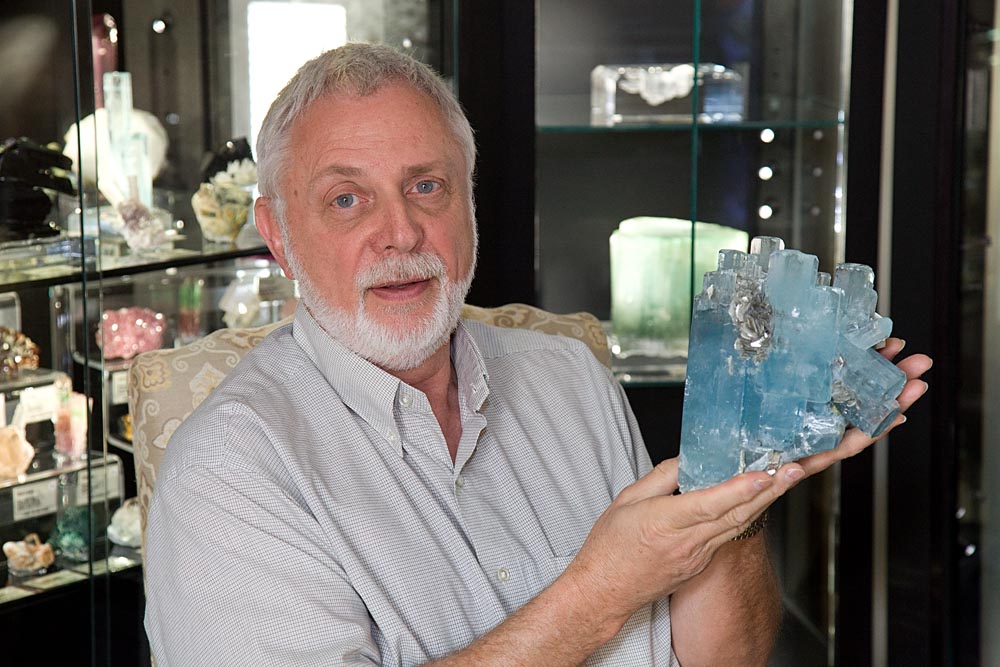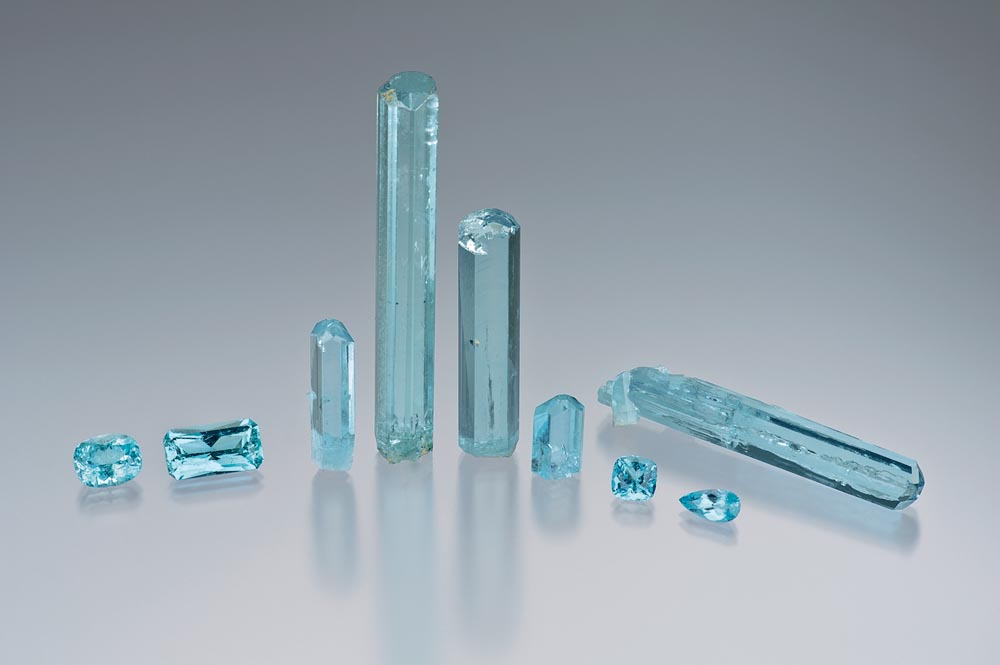Buyer's Guide
Fine aquamarines are a marriage between color and clarity. The best are dark blue to slightly greenish blue with no visible inclusions. Careful cutting maximizes both qualities to produce superb gems.
FIND A JEWELER
Submit your gemstone through your local jeweler.
FIND A REPORT
Verify the information on your report matches what is archived in the GIA report database.
What To Look For
Most faceted aquamarines are free of eye-visible inclusions. Collectors generally expect clean gems with good transparency. There is a trend today to use included, but good-color aquamarines as unique centerpieces for jewelry articles or even as partially polished crystal slices or nuggets in necklaces.
Aquamarines can be cut into almost any shape, but cutters often fashion them as emerald cuts or as round or oval brilliants. Many gem artists use aquamarine for one-of-a-kind designer cuts because their styles maximize the material’s pure, even color and high clarity.
Aquamarine Quality Factors: The Comprehensive Guide
Tips & Advice
1. Top quality aquamarine shouldn’t have any eye visible inclusions.
Although aquamarine is the mineral beryl, like emerald, inclusions are much less accepted than they would be in emerald. Aquamarine that is milky or included is much less expensive, although it may be beautiful in its own way.
2. If it seems too good to be true, it probably is.
Fine aquamarine is rare and expensive. Large gems with intense color that are selling for less than $100 are unlikely to be aquamarine.
3. Trust your color preferences.
If you prefer an aquamarine color that has more green in it, you can buy a beautiful gem for less than you would pay for the same gem if it was a pure blue.
4. Work with a jeweler with expertise.
Judging the quality of aquamarine requires skill and knowledge. Look for gemological credentials. A jeweler who knows and loves aquamarine will have several to show you so you can see quality differences side by side.
Questions & Answers
Why does aquamarine cost so much more than blue topaz that's almost the same color?
Blue topaz is more common because the color is produced by treating colorless topaz with radiation. Aquamarine is rarer in nature, especially in fine color. Its long history as a gem also adds to its collectibility.
Why don't the aquamarine side stones in my ring match the center stone?
Aquamarine’s color gets more intense as it gets larger. It is very difficult to find small sizes with saturated color: most stones below a carat in size have a pale color.
Are origins like “Santa Maria” important to the value of aquamarines?
Although it’s always interesting to know where a gem was mined, origin isn’t an important factor in an aquamarine’s value. Famous mines are well regarded because they produce fine-quality gems that are valuable; gems aren’t fine or valuable just because they come from famous mines.
What is AAA-quality aquamarine?
Although individual companies might create their own quality descriptions, like AAA, AA and A, to denote the range of quality of their goods, no standard quality-grading scales exist for aquamarine.
Does GIA grade aquamarine?
GIA evaluates aquamarine but does not grade it. A GIA Colored Stone Identification Report assesses the characteristics of a mounted or loose aquamarine (weight, measurements, shape, cutting style and color), indicates whether it is natural or laboratory-grown and names any detectable treatments.
Find out more
Aquamarine: Questions & AnswersCaring for Your Aquamarine
Keep your aquamarine beautiful by following simple care and cleaning guidelines.

Durability
Aquamarine is durable—it’s a good choice for rings and mountings subject to daily wear.

Care and Cleaning
Warm soapy water is always safe.

Treatment
Heat treatment of aquamarine is stable, but fracture-filled gems should only be cleaned with warm soapy water.



